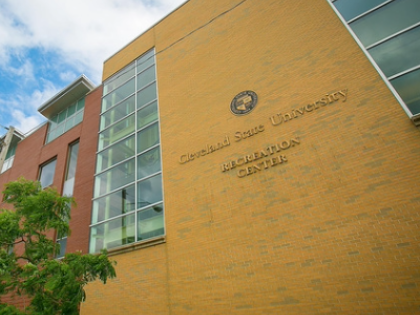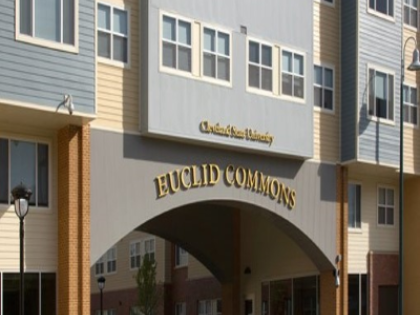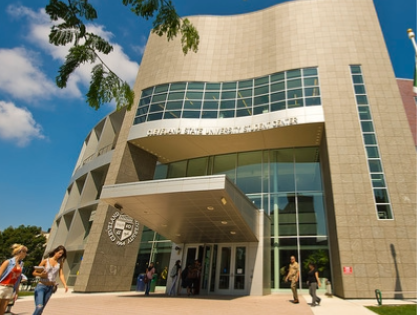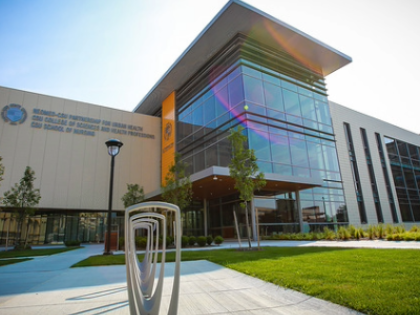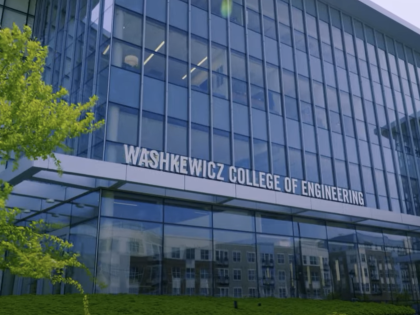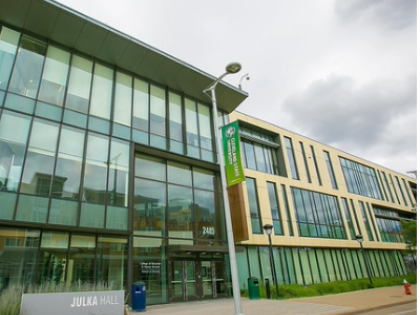Sustainability
Contact Information
Joe Minerd
Utilities and Sustainability Mgr.
Cleveland State University
1802 E 25th Street, PS 213
Cleveland, OH 44114
216-407-8305
https://www.csuohio.edu/sustainabilityBuildings and Ground
The CSU Master Plan supports the adoption of Leadership in Energy and Environmental Design (LEED) practices for new construction. CSU seeks LEED certification for green design on all new campus buildings. CSU's LEED-certified buildings include:
- Recreation Center (LEED Certified 2008)
- Euclid Commons (LEED Silver 2012)
- Julka Hall (LEED Gold 2013)
- Student Center (LEED Silver 2014)
- Center for Innovation in Medical Professions (LEED Silver 2017)
- Washkewicz College of Engineering (LEED Gold 2020)
Sustainability Specifications
Campus A/E Guidelines specifically require a number of building-related measures that must meet or exceed the latest version of the USGBC's LEED rating system Silver level.
CSU follows LEED principles for construction and demolition waste management. Contractors are required to develop and implement a construction waste management plan to recycle and/or salvage nonhazardous construction and demolition debris.
Grounds and Landscapes
The CSU campus sits on 85 acres in downtown Cleveland, of which 21 acres is green space.
The Cleveland State University Grounds Department takes full stewardship of the landscape on campus including trees, shrubs, green roofs, perennials and annual plant displays. The team maintains, prunes, evaluates and plans for future plantings. They are currently identifying, mapping and quantifying all the plant material on campus, with a goal of continuously improving the management of our horticultural assets.
Tree Campus Higher Education
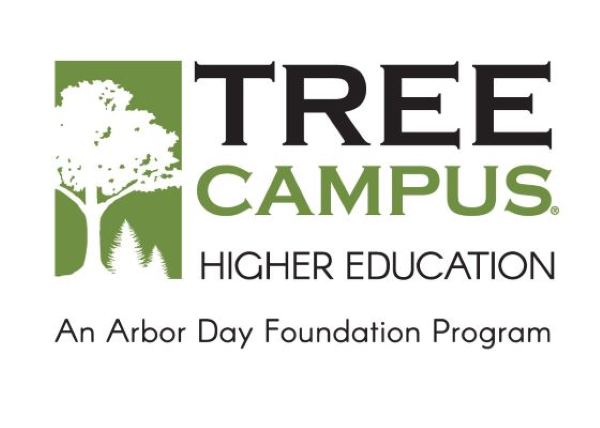
Tree Campus Higher Education, an Arbor Day Foundation program, honors colleges and universities for promoting healthy trees and engaging students and staff in the spirit of conservation. To obtain this distinction, CSU has met the five core standards for sustainable campus forestry required by Tree Campus Higher Education, including establishment of a tree advisory committee, evidence of a campus tree care plan, dedicated annual expenditures for the campus tree program, an Arbor Day observance, and the sponsorship of student service learning projects.
CSU Horticulture Tour
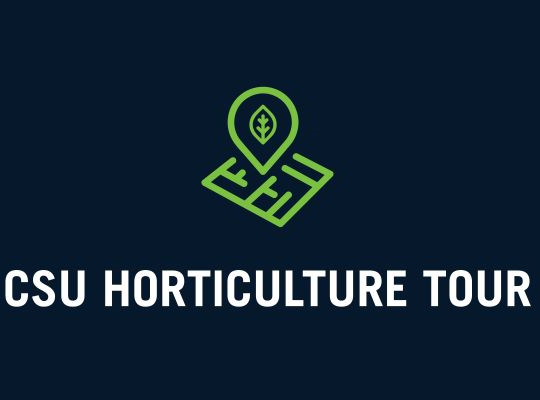
Did you know that CSU has 1,180 trees and 69 unique tree species on its grounds? This interactive GIS-based map includes all trees, pollinator gardens and green roofs on campus. It was developed through a partnership between the Maxine Goodman Levin College of Urban Affairs; Biological, Geological, & Environmental Sciences; and F.A.S.T. You can still access the original interactive tree map to view the tree species and their distribution on campus.
Landscape Management
Cleveland State has maintained a comprehensive Integrated Pest Management (IPM) plan for over twenty years focused on monitoring and identifying pests, setting action thresholds, removing conditions that attract pests, and taking controlled corrective action only when necessary.
The Grounds Department is currently collecting baseline data to measure and manage water usage, with a goal of minimizing total consumption. Landscape irrigation is done judiciously and with water conservation strategies in mind.
All grounds waste is collected by a contractor for composting off-site. No grass clippings are collected or bagged; grass clippings are discharged onto lawn areas to provide a natural fertilizer for a healthy lawn.
Mechanical means of snow and ice removal are used whenever possible. Chemical deicers are used judiciously to minimize environmental impact. Drop spreaders reduce salt usage by dropping salt straight down instead of spraying it out broadly onto landscapes. The edges of sidewalks are sloped upwards to keep residual deicer from draining onto vegetated areas.
Green Roofs
Green roofs provide a number of environmental benefits including reducing stormwater runoff, lowering energy use, and minimizing the heat island effect. CSU has installed green roofs in the following locations:
Recreation Center
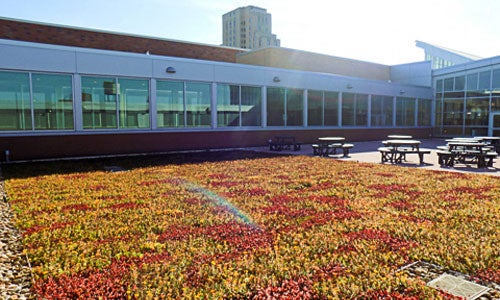
Health Sciences
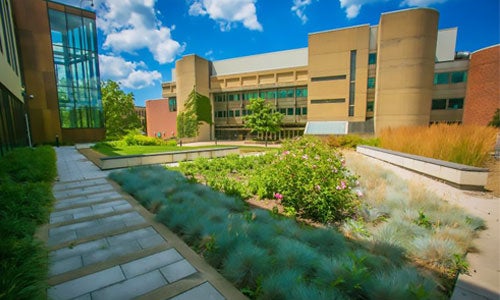
Student Center Plaza
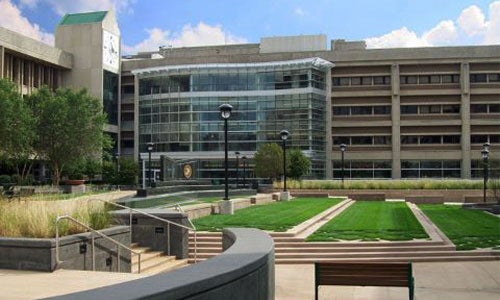
Green roofs improve stormwater management by reducing runoff which, if left unchecked, can exacerbate flooding, increase erosion, and may result in raw sewage being discharged directly into waterways. Because urban areas have so many impervious surfaces, green roofs can provide significant benefits because they absorb stormwater and release it slowly over time.
Additionally, the vegetation of a green roof can sequester carbon, increase urban biodiversity by providing habitat for wildlife, and provide an aesthetically pleasing environment to work and study.
Green roofs consist of a waterproofing membrane, soil, and plants on top of a traditional roof.
Bird Friendly Buildings
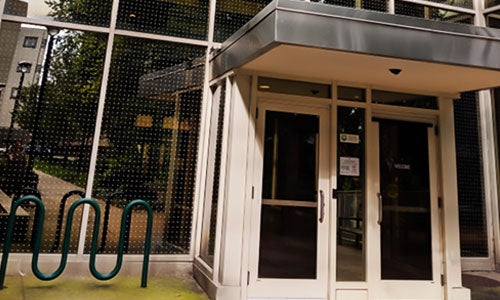
Collisions with buildings are a leading cause of bird fatalities in North America. A combination of light pollution and reflective building materials confuse birds and lead to collisions.
The Cleveland-Marshall College of Law Library has installed a dot pattern film on entryway glass to prevent bird fatalities. Vinyl dots spaced two inches apart in a grid pattern will help birds distinguish window reflections from natural habitat.
Volunteers with Lights Out Cleveland monitor the city for bird-building fatalities and since the installment, no bird fatalities have been reported in the area.
Contact Information
Joe Minerd
Utilities and Sustainability Mgr.
Cleveland State University
1802 E 25th Street, PS 213
Cleveland, OH 44114
216-407-8305
https://www.csuohio.edu/sustainability